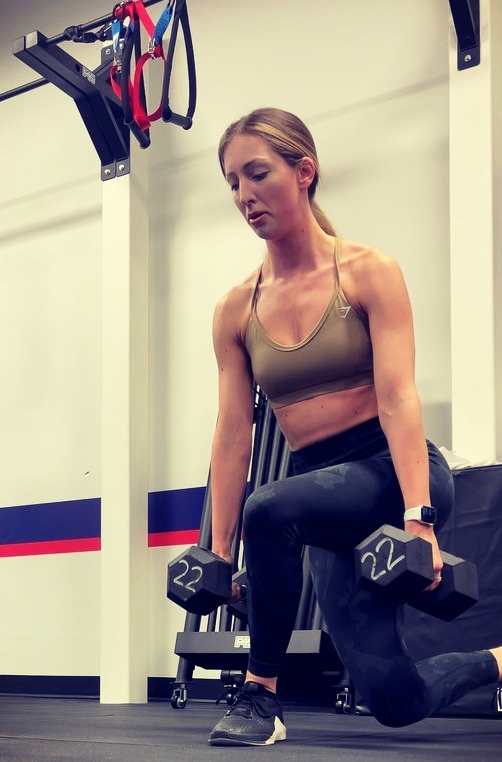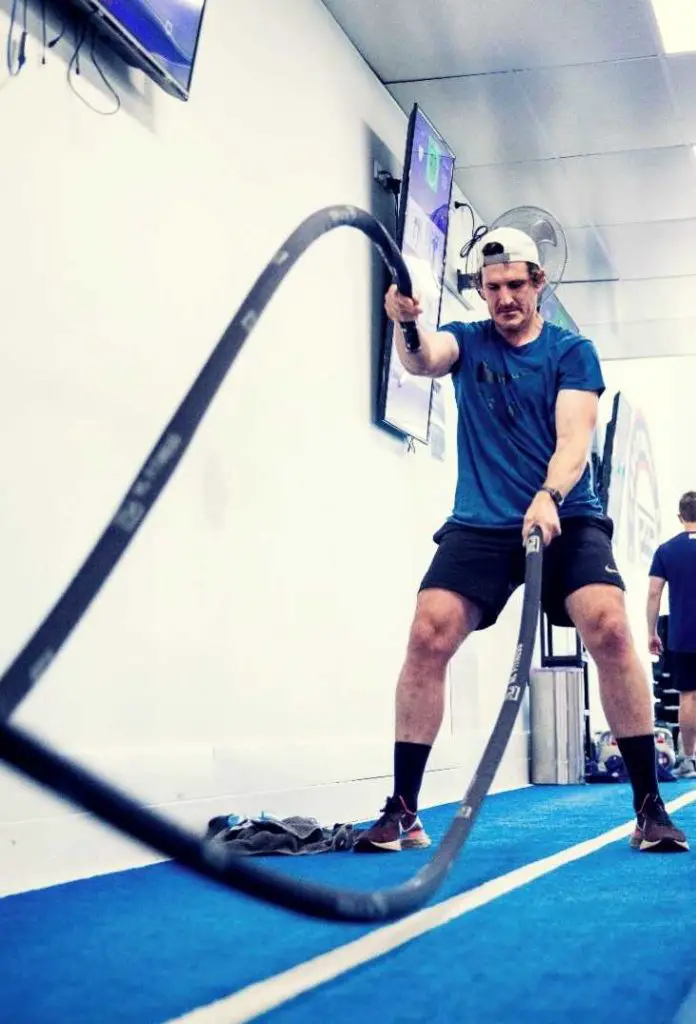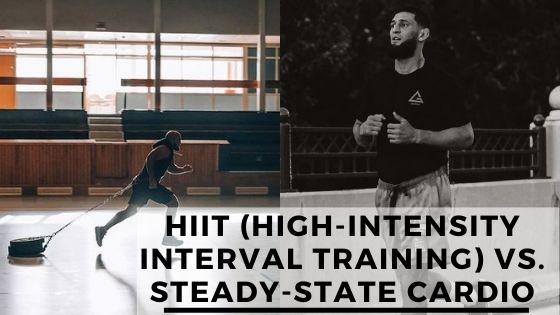One of the main, and if not the most important attributes that one Mixed Martial Arts fighter should have is excellent endurance. All the other traits come second.
As you already know, there are different ways to build your endurance, and different techniques work differently for each individual.

Understand the basics: HIIT (High-intensity interval training) Vs. steady-state cardio
First let me introduce you to two less known words: HIIT (High-intensity interval training) and steady-state cardio.
HIIT exercises are fueled by glucose or sugar which is stored in your muscles.
These exercises involve extremely intense intervals of muscle use, where the muscles demand more oxygen than you can supply through breathing.
This causes your heart rate to jump up to 160 bpm, and even more.
On the other hand, steady-state cardio uses oxygen to decompose glucose and fats from your body and use it as fuel.
it involves a steady heart rate, usually over 100 bpm, and a pace of using around 60-70% of your strength so you can endure a longer undisturbed period of exercising.
In the following text, we will look at these two types of endurance training techniques, so you can weigh them and decide which one would work better for you.
Or even better help you combine both to improve you in the areas that you need to progress.
1. HIIT or High-Intensity Interval Training

HIIT is a type of aerobic training used to stimulate and ‘exercise’ your cardiovascular system, or simply said, your heart.
Going through a set of very concentrated anaerobic exercises which last between 30 seconds and 3 minutes.
The key point is that you are not providing a rest time for your body longer than 3 minutes in between sets.
Around 30 years ago HIIT was introduced to the world and it raised a number of questions among professional and amateur athletes, especially fighters.
Is it good, is it bad? And the answer is – DEPENDS.
If you are an athlete or fighter who combines weight training, sparring and HIIT this might burn you out and do more damage than good to your body and spirit.
So, first advice if you are planning to add HIIT to your training, consider balancing the activities in your other types of training as well.
A good balance between weightlifting, MMA exercises, and HIIT is a must in order to avoid being injured.
If you decide to balance things out and introduce HIIT to your training list, you won’t regret it.
Because of the intensity of it, your endurance level will jump by a considerable amount.
After several weeks of HIIT, you’ll be able to endure more intense fighting sessions for a longer time.
Your body will get used to the intensity and the conditions that you create for it with HIIT and when you enter the ring this will show.
Delivering hard and consecutive strikes for a longer period won’t present an issue because your heart used to the HIIT will be able to achieve this with less bpm than usual.
Also, HIIT if done properly might result in increased strength and muscle mass helping you to make your strikes more powerful and provide you with an improved ‘jacked up’ look.
The obvious cons to this are that you might easily injure yourself, you might easily over-train and as a result, this might prolong your recovery time after training.
2. Steady-state Cardio

Or good old cardio as we all know it.
This aerobic type of exercise includes everything from running, walking, jumping rope, swimming, and all the way to cycling and mountain hiking.
There is no doubt that developing and keeping well exercised and durable aerobic system will help you with the performance of any given physical activity that you might have in your life.
To put it in other words, the breakpoint of any given physical activity is determined by the level of development of your aerobic system.
How cardio works is – whilst running, for example, you bring your pulse up and keep it at a steady but high rate.
This causes your heart to pump more blood for a higher period of time resulting in permanent healthy enlargement which afterward contributes to having a lower heart rate.
Lower heart rate itself benefits your body in many ways – gives you a more relaxed nervous system which itself can benefit your body by being less prone to stress.
One of the benefits that it includes is being able to sustain an intense exercise with a relatively lower heart rate, allowing you to push harder and make more of your usual training routines.
Relaxing, or getting a ‘normal’ heart rate after an intense exercise.
Another benefit of this type of exercise – normalizing your pulse after pushing hard is very important.
It allows you to recover faster and be ready for the next round faster.
Meaning you’ll enter each following round relaxed and not already driven to your limit.
Cons to this type of exercise are that after some period of time, even though after cardio you feel better, it is usually not enough to push you to a limit.
For this, you need to increase the speed of running which might result in injuries like joint pain, or overactive bladder.
To sum up, steady cardio is a base type of training and should be involved in all training sessions, regardless if they are MMA, bodybuilding, or cardio only.
We might even say that steady-state cardio is a predecessor and first step to HIIT. If you do not have a good aerobic condition, you are not able to proceed with HIIT.
HIIT is training that might benefit MMA fighters more than steady-state cardio, increasing their stamina and strength, however, including both on a weekly basis might benefit the fighters most.
Doing only HIIT might lead to injuries, and over time ‘taking a break’ from HIIT by implementing running or cycling sessions instead should be the best way to success.




